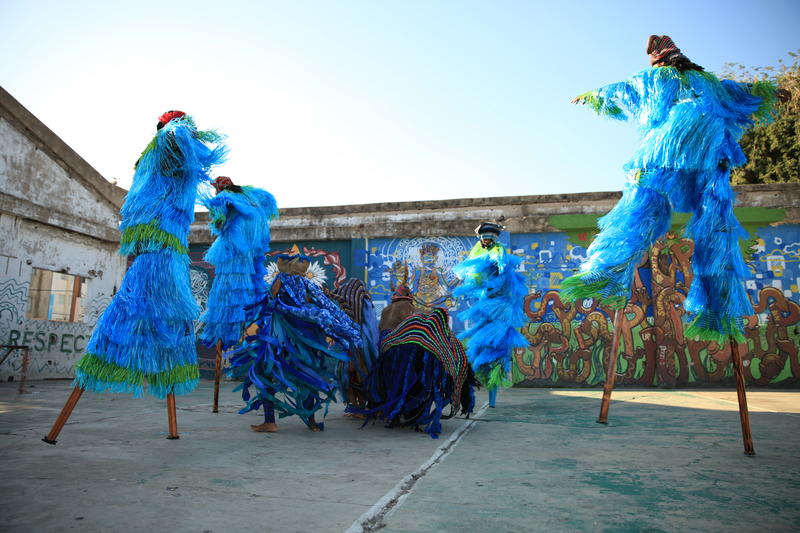Born in Mexico City and based in New York, Laura Anderson Barbata’s work is focused on participatory art projects that document communities and traditions, using art forms as platforms for social change, contemporary performance, group participation, and protest.
In 2016, Barbata spent a month at the Isabella Stewart Gardner Museum immersing herself in the daily life of the Museum, researching, writing in her apartment and in the Museum’s Living Room, and enjoying the singing of Whistler, the resident canary. Barbata used her time to prepare for La Extraordinaria Historia de Julia Pastrana, a work performed at the Cobra Club in Brooklyn. Pastrana was an indigenous singer and performer from Mexico born with a genetic condition that covered her face and body with black hair and exaggerated her features. During the 19th century, she took part in exhibition tours, and after her death, her body was embalmed and exhibited extensively throughout Europe and the U.S. Barbata spent ten years winning the repatriation and burial of Pastrana’s body in Mexico. During her residency, Barbata also worked on a limited edition ‘zine to explore the issues related to Pastrana’s life.
Barbata has a passion for fabrics and uses them in artworks that blend art, dance, music, and performance with costumes that she creates. She was especially eager to visit with the Museum’s textile conservators and to learn about the coming restoration of the Raphael Room and its fabric wall coverings. Barbata talked with Tess Fredette, the Senior Textile Conservator, who was knowledgeable about the photographs and historic documents of the textiles and furnishings in the room. Fredette showed her that the walls were constructed of patterns pieced together; one wall was constructed from 32 different segments. She also shared her research on the 20 different patterns that were being re-created for the project. This experience prompted Barbata to create a series of costumes based on the textile patterns for a special performance at the Gardner.
In looking through the Archives, Barbata focused on women in the performing arts and social activism. She read the correspondence between Isabella Stewart Gardner and opera singers Nellie Melba, Lena Little, and Amalie Materna, and between Isabella and Julia Ward Howe, the poet and a champion of women’s rights.
During her residency, Barbata was invited to participate in an exhibition at the Museo Textil de Oxaca, Mexico. She created two new works, Medusa nocturna and Egungun, which incorporated yellow feathers shed by Whistler, the canary.
Laura Anderson Barbata is a professor at the Escuela Nacional de Escultura, Pintura y Grabado La Esmeralda of the Instituto Nacional de Bellas Artes, México. Her interdisciplinary work has received grants and awards from Bellas Artes and FONCA. She is an honorary fellow at the Latin American Caribbean and Iberian Studies Department of the University of Wisconsin. Since 1992, she has worked primarily in the social realm and has initiated projects in Venezuela, Trinidad and Tobago, Norway, Mexico, and the United States. Her work is included in private and public collections, including the Metropolitan Museum of Art in New York, the Museo de Arte Moderno in Mexico City, and Landesbank Baden-Württemberg in Stuttgart, Germany.
In 2007 Barbata began working with the Brooklyn Jumbies, who perform stilt dancing, one of the numerous cultural elements of the African and Caribbean diaspora. Barbata and the Brooklyn Jumbies have highlighted the vitality of the tradition and demonstrated the possibility of using this art form as a platform for social contemporary performance, group participation, and protest. She and the Jumbies performed at one of the Museum’s Neighborhood Nights where Babata featured costumes and clothing inspired by the fabrics Isabella installed in the Raphael Room.
